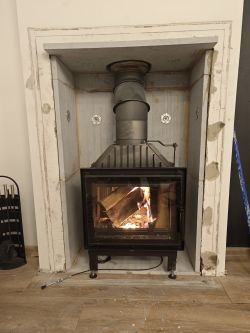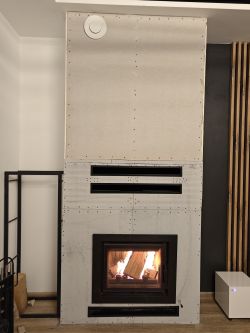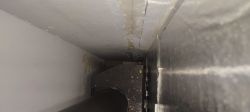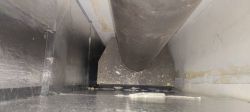It is not a smoke smell from the firebox and there is no leakage either, this has been checked many times.
The chemical smell is coming from the cartridge or the build-up. And this is not in dispute.
My fireplace, on the other hand, currently looks like this:
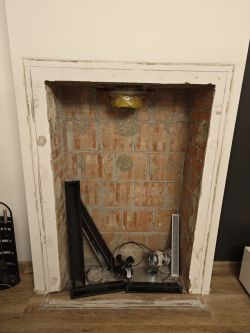 .
.
The insert has been dismantled and sent back to the manufacturer for shotblasting. It has to be said that Kratki (the manufacturer) were very helpful in organising this whole process. The shotblasting and transport is £800. I am waiting for now.
After sending it back, I intend to build up the fireplace with Varmsen/Skamol panels, maintaining the required active areas of the built-in ventilation grilles. A similar building, once overheated, will always smell.
I will let you know.
The chemical smell is coming from the cartridge or the build-up. And this is not in dispute.
My fireplace, on the other hand, currently looks like this:
 .
.
The insert has been dismantled and sent back to the manufacturer for shotblasting. It has to be said that Kratki (the manufacturer) were very helpful in organising this whole process. The shotblasting and transport is £800. I am waiting for now.
After sending it back, I intend to build up the fireplace with Varmsen/Skamol panels, maintaining the required active areas of the built-in ventilation grilles. A similar building, once overheated, will always smell.
I will let you know.



